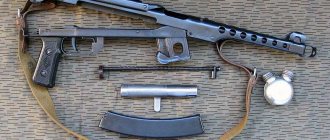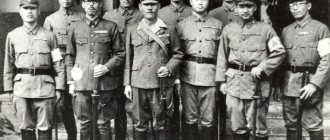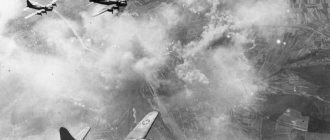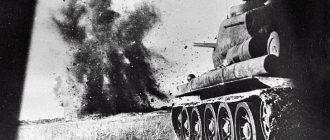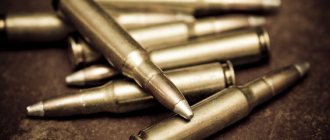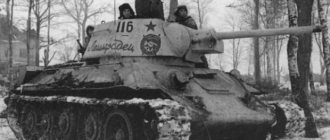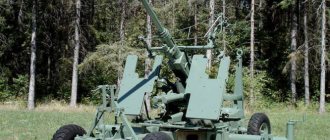There were about two dozen models of weapons in circulation on the civilian market of the Russian Federation, converted from real combat models, including those used during the Great Patriotic War. PPSh and PPS assault rifles, Tokarev self-loading rifles and the legendary Mosinki, you could even buy a Maxim heavy machine gun or a DP-27 manual machine gun. Of course, we are talking about their civilian versions.
How the Maxim machine gun became the world's first weapon of mass destruction
However, today weapons from that war are rapidly disappearing from store shelves. On the websites of gun stores there are still offers with price tags from two years ago, under which there is a note “product out of stock.” Employees of the commercial departments, when asked whether it is possible to purchase or order a hunting Maxim, answer that the last sample was sold several years ago and no new deliveries are expected. At the same time, modern military weapons - AKM, AK-74 assault rifles, Kalashnikovs of the “hundredth series”, RPK machine guns, VSS special forces rifles and Val assault rifles are being actively converted for the civilian market.
Most recently, the Kalashnikov concern announced civilian versions of the AK-12 and AK-15 assault rifles, as well as the promising Chukavina sniper rifle (SHF). “Profile” decided to find out what was happening in the market.
Safe for Maxim
The sale of outdated models of army rifles on the civilian market is widely practiced in all countries with more or less liberal weapons legislation. This is logical - why spend money on storing or disposing of something that can still bring profit? The United States, of course, has the lead in this matter. The well-known American importing company Century International Arms even built a business by buying old decommissioned machine guns, rifles and machine guns in third world countries at the price of recyclable materials, putting them in order, adapting them to the requirements of local legislation and selling them to gun lovers and collectors from the USA and European countries.
The Long Barrel of Discord: How to Travel with a Weapon and Not Lose It
Of course, the phrases “Maxim hunting carbine” or “Degtyarev infantry hunting carbine” sound strange. But this is exactly how the fenced versions of the legendary Maxim machine gun or the Degtyarev light machine gun of the 1927 model DP-27 were positioned. The fact is that in our law “On Weapons” there are no definitions such as “historical rifled weapons” or “conversion rifled weapons”; citizens are allowed to own only hunting weapons. Therefore, if a collector or an ordinary citizen who has the right to purchase a rifled weapon decides that he needs a machine gun that fires (even if only single-shot), he can buy it as a “hunting weapon with a rifled barrel.”
By the way, today in the Russian Federation almost all samples of long-barreled guns from the Second and even the First World War are certified as such. Specialized websites offer assistance in legally purchasing hunting machine guns MG‑34 and MG‑42 for 650–700 thousand rubles, a French Shosha machine gun model 1915 for 1.5 million rubles. You can buy a StG44 Sturmgewehr for about a million, Thompson submachine guns for about 300 thousand rubles, a German MP38 for 700 thousand, etc.
Fenced maxims, “sturmgevers”, PPSh are as similar as possible to the originals, the only condition is that they must operate only in semi-automatic mode (one press of the trigger - one shot), and the capacity of magazines and belts is limited to 10 rounds. But, unlike the cold versions, hunting machine guns and machine guns do not have obvious traces of milling or welding.
What weapons were used during the most notorious political murders?
By law, a civilian machine gun must be kept in a safe, and if desired, its owner can go hunting with it. Of course, tracking down game with a 65-kilogram device—that’s how much the Maxim weighs with the machine—doesn’t seem like a good idea. By the way, a few years ago, one of my friends actually bought a wartime heavy machine gun, paying about 300 thousand for it. He says that he has no regrets, however, in my memory, only once did he take his pet to the shooting range, which caused a stir among everyone present. And so the machine gun is in an iron box, and the machine from it is in the garage.
Characteristics
| Brand: | ZID |
| Model: | Maksim |
| Caliber: The caliber of a rifle is measured by the distance between opposite fields, or by the distance between the bottom of opposite ones. Methods for measuring (A, B) the caliber of trunks of various sections. In the USA, Great Britain and other countries it is indicated in fractions of an inch (.308 Winchester; in the USA - in hundredths (0.45 inches), in the UK - in thousandths (0.450 inches). In other countries it is measured in millimeters - 9×18 (first number, 9 - caliber, second, 18 - sleeve length in millimeters). | 7,62×54 |
| Magazine capacity: | |
| Barrel length, mm: | 720 |
| Product weight, g: | ~67600 |
| Sighting range, m: | 300 |
| Butt material (stock): | metal |
| Operating principle: Bolt-action This type provides opening and closing of the barrel by moving the bolt along the axis of the barrel. The mechanism is popular due to the fact that the bolt in it can easily be used as the main driving force for activating other weapon mechanisms - feeding cartridges, removing spent cartridges and others, thereby ensuring simplicity and rationality of the design of the weapon, creating the best conditions for reloading and layout weapons in general. Inertial principle - a weapon in which automatic action is achieved by using the recoil energy generated by the shot; Gas principle - a weapon in which the automation is driven by the pressure of powder gases. Union A shotgun with a break barrel. Fittings usually have two barrels, but there are single-barrel and less often three-barrel. The advantage of the fitting compared to a magazine carbine is the ability to quickly fire a second shot without wasting time on jerking the bolt. No less important is the greater reliability of the fitting, since in the event of a misfire on the first shot, you can immediately, without delay, shoot from the second barrel. Henry Brace – the principle of operation in which moving the Henry reloading bracket downward and forward allows the locking wedge to be lowered. Moving the bracket in the rear and upward directions allows the bolt to send the next cartridge into the barrel from the magazine, then the wedge rises up, installing itself in a cutout in the rear of the bolt, locking it. Feeding is carried out by an integral box magazine, in which the cartridges are arranged in a single row; the cartridges are loaded and the spent cartridges are ejected as a result of the open bolt through the upper window of the receiver.
| inertial |
| Color: | green |
| Country of manufacture: | Russia |
| Brand Country: | RUSSIA |
The iconic “three-line”
Hunting conversions from military models appeared back in Soviet times. At the end of the 30s, Mosin army carbines began to be converted into hunting KO-38 and KO-40. They were practically inaccessible to ordinary Soviet citizens, and the entire conversion boiled down to removing the bayonet and installing the so-called. forensic marks that were supposed to help identify weapons. The 7.62x54 mm cartridge with a muzzle energy of about 3.5 thousand J made the “three-line” suitable for hunting almost any game that lived in our country. By the way, before the introduction of Western sanctions, fenced Mosinki were supplied to the West and were very popular there. One of the largest American online weapons stores, Bud's Gun Shop, named the Russian “three-line” as the sales leader on the civilian weapons market in the United States at the end of 2012.
Experts spoke about the weapons with which the Americans plan to replace the M16
Following the Mosin rifle, self-loading Simonov carbines (SKS) and Tokarev rifles (SVT) migrated from military warehouses to the Russian civilian market. It is interesting that the latter, as a rule, are not self-loading SVT-38, but automatic AVT-40, in which the automatic fire mode has been removed. As for the SKS, in Soviet times it was the only available rifled semi-automatic (for fishermen and huntsmen) and was considered a cult weapon, even despite the relatively weak 7.62x39 automatic cartridge. I have heard from game managers—it’s hard to say whether it’s true or not—about hunters who killed several hundred bears using these weapons.
Breakthrough of the 12th year
A real breakthrough in the promotion of army models to civilian use occurred in 2012, when the Ministry of Defense donated tens of thousands of obsolete small arms from its warehouses to several companies. AK, AKM, AKMS assault rifles, PPSh submachine guns, SVT-40 rifles, Maxima and DP-27 rifles were converted into hunting and cooled samples (only for firing blank cartridges).
De facto, this was a way to support domestic manufacturers - arms factories had the opportunity to earn additional income with minimal investment. The conversion of military weapons into civilian ones was extremely simple and consisted of eliminating the automatic fire mode of machine guns and machine guns and installing smoke marks in the chamber or barrel. Well, also preparing the necessary certificates and documentation. The beneficiaries of this action were companies included in the Rostec Group of Companies: the Kovrov Plant named after V.A. Degtyarev (ZiD), the Vyatsko-Polyansky plant, as well as a private company engaged in the distribution, tuning and conversion of weapons.
Thus, all three companies offered their versions of civilian PPSh under different names: VPO-13 and PPSh-O chambered for the original 7.62x25 cartridge and PPSh-Luger from Molot-Arms chambered for the 9x19 Luger cartridge (aka 9 mm parabellum). “Molot-Weapons” and “Molot-Arms” have in their assortment fenced versions of the original military AKM and AKMS, etc.
Most of the Russian rifled hunting weapons are made on the basis of army models - Kalashnikov assault rifles and light machine guns, Dragunov sniper rifles (SVD). In the photo: a customer in front of a gun store window. On the left you can see Tiger carbines based on SVD
Valery Matytsin / TASS
A hunting PPSh is quite cheap - 20-25 thousand rubles, but this weapon is practically unsuitable for hunting - the pistol cartridge is weak, the firing range is short, and installation of optics is possible only with good metalworking skills. For sports (say, practical shooting), it’s also not so hot - the ergonomics are poor by modern standards, and it’s difficult to equip and attach magazines. Another problem is the small range and high cost of 7.62x25 mm cartridges: the cheapest ones available cost from 20 rubles. and higher. For comparison: 9x19 can be bought for 8–9 rubles.
In 2016, Molot-Arms launched the MA-PPS carbine, a self-loading version of the Sudaev submachine gun of the 1943 model (PPS-43). Unlike PPSh-41, the batch of fenced PPS was small, and they were expensive - about 110-140 thousand rubles. This is understandable; about 500 thousand units were produced in the USSR during the Great Patriotic War, and until the end of the 80s they were used by the paramilitary structures of the USSR and supplied abroad. In addition, converting them into civilian weapons turned out to be much more difficult.
Unlike the PPSh, which has two fire modes - single and automatic, the PPS is “sharpened” only for automatic fire. Therefore, special changes had to be made to the design - during the fencing process, the weapon disassembly scheme even changed, the butt was fixed and tightly welded to the receiver. All this was done to meet legal requirements. At the same time, MA-PPS users complained about delays when firing and generally rated the modification as not of very high quality.
In the same 2016, Molot-Arms also offered a civilian version of the German MP-38 submachine gun - it was called the “MA-MP38 hunting carbine of 9x19 parabellum caliber.” It was a Ukrainian remake, which, according to the sellers, consisted almost entirely of original German components from World War II. The only modern part was the barrel, made by Ukrainian gunsmiths. The cost of the German-Ukrainian gadget exceeded 400 thousand rubles, and the batch was limited.
By the way, for a long time the only “protected” foreign car on our market was considered to be a German rifle, or rather, a Mauser 98k carbine - the main small arms of the Wehrmacht. Trophy Mausers did not gain much love from hunters due to the expensive and rare 7.92x57 mm cartridge. In addition, the condition of the weapons often left much to be desired - this is the problem with most decommissioned models. But these rifles have become popular among lovers of historical weapons and collectors - the cost of 98k on the secondary market, depending on condition and configuration, ranges from 50 thousand to 300 thousand rubles. (sniper version with optical sight).
In the early 2000s, the Tula Arms Plant began installing new 7.62 mm caliber barrels chambered for the 308 Win cartridge (the civilian version of the 7.62x51 NATO cartridge) on captured Mausers. The weapon was called the “KO-98 hunting carbine” and cost only about 10 thousand rubles. But the experiment was not very successful - the quality of the new barrels caused criticism, and in general the modernized Mauser was inferior to modern models.
Hunting machine gun and hunting machine gun
The number of conversions from military weapons has increased sharply since 2012. First, Molot Arms presented a new hunting carbine, SVT-O, based on the Tokarev automatic rifle (AVT-40). It was produced by the company's order at the plant named after. V.A. Degtyareva (ZiD). SVT-O were converted from rifles manufactured in 1944; these weapons did not reach the front, which had a positive effect on the quality of the barrels.
In 2013, Vyatsko-Polyansky and ZiD announced the production of self-loading carbines from PPSh assault rifles - VPO-135 and PPSh-O, respectively. Both samples were made in the original “military” caliber 7.62x25 millimeters - the same one used in the TT pistol.
In the civilian versions of the “dad” (the PPSh received this nickname during the war), the fire selector is welded in the “single fire” position, and so that the firing mechanism (trigger mechanism) cannot be replaced with the original one, the trigger block mounting screw is welded to the receiver. A pin is installed in the disk magazine that does not allow loading more than 10 rounds, plus, at the request of forensic experts, a recess is made on the shutter mirror, leaving a mark on the sleeve, and a pin is welded into the barrel, marking the bullet.
The weapon turned out to be relatively inexpensive - about 20 thousand rubles, which cannot be said about ammunition. Pistol cartridges of 7.62x25 mm caliber are produced by literally a couple of factories: the domestic version costs about 25 rubles apiece, and the cartridge of the Serbian Partizan brand costs more than 50 rubles. For comparison: cheap pistol cartridges of 9-19 Parabellum caliber cost about 8 rubles. This is probably why in 2014 ZiD launched the PPSh-Luger, a self-loading carbine chambered for the 9x19 Parabellum cartridge. Visually, the PPSh-Luger differs from the first two with a slightly longer barrel.
Much less common than the PPSh is the civilian version of the Degtyarev MA-PPD-40 submachine gun chambered for 7.62x25. The price of the weapon is about 300 thousand rubles.
Also in 2014, a civilian version of the Degtyarev machine gun of the 1927 model, DP-27, appeared. In civilian life it became known as DP-O; it is also produced by ZiD for Hammer Arms. The weapon is designed only for single fire, the disc capacity is limited to ten rounds, a pin is installed in the barrel, and a recess is made on the bolt mirror. Since the Russian Law “On Weapons” does not contain the phrase “historical rifled weapon,” the “citizenized” “Degtyarev” is positioned as a “self-loading hunting carbine.” The weight of the “carbine” is more than 10 kilograms, the cost is about 70 thousand rubles.
Mongolian soldiers with a DP-27 machine gun
Photo: TASS photo chronicle
And the Maxim machine gun (usually manufactured in 1930-1940), modified for the civilian market, went on sale in 2014 under the mysterious name “long-barreled hunting weapon with a rifled barrel “Maxim”.” The weight of the device exceeded 60 kilograms, the price ranged from 250 thousand to 400 thousand rubles. The most expensive models were those made on a pre-revolutionary machine.
However, the main exotic items on the Russian arms market are “foreign cars” from the Second World War - one-piece weapons with a price approaching the cost of a passenger car. This is how a small number of German MG-34 machine guns from captured stocks were “secured” - they were sold out without even going on sale.
Several years ago, “protected” versions of Thompson submachine guns (USA) were announced on thematic forums - they were supposed to be imported from Germany. They did not appear in gun stores, but some of them may have ended up in private collections. But on the shelves of some weapons stores in 2013, “fenced” German StG 44 stormtroopers worth more than 750 thousand rubles were displayed. There is still no consensus among experts whether these were original samples, a “remake” brought from Germany, or a compilation of original and modern parts.
Find the differences
Most of the civilian rifled samples in the Russian Federation are the so-called. “black weapons”, that is, made on the basis of army models. The Saiga and Tiger carbines from the Kalashnikov concern are made on the basis of Kalashnikov assault rifles and Dragunov sniper rifles, and the Vepr carbines from Molot-Weapon are based on the Kalashnikov light machine gun (RPK and RPK-74), produced which the Vyatka-Polyansky plant was engaged in.
Before the start of sales of the original fenced AKs and AKMs, “Vepri” and “Saiga” had a peculiar “civilian” design, a modified trigger mechanism, in which there was no self-timer axis, plus the carbines did not have a guide for the so-called cartridge. “cracker”, without which it was impossible to use standard army magazines. But most of the new models are maximally unified with military models, and the self-timer axis on the Veprs is even a kind of marketing “feature” of the Hammer.
I called several stores that once sold hunting machine guns. “They used to be, but now they’re not and haven’t been for a long time - they were sold individually and cost about 500 thousand,” answered a representative of one of the retailers. When asked whether it was possible to order a civilian version of the Maxim, they advised to contact Molot-Arms, which supplied them.
“We sold the last Maxim two years ago,” said the commercial department for civilian samples.
- Will there be more?
– Hardly – there are no bases [of military machine guns]. I'm sure the Tula plant has bases, but they are in no hurry to sell them. The Mosinki ran out, the DP-27 and PPSh ran out, the PPS ran out - there were very few of them, and we sold them in literally six months. We may have DP, but their price tag will be around 120–150 thousand.”
The weapons had to run out, because the last transfer was made under Serdyukov, this is how weapons expert, editor-in-chief of Caliber magazine Alexander Kudryashov commented on the situation. Since then the tap has been turned off for some reason. In addition, in 2016, the Duma launched a campaign against restricted weapons or SHP. However, the main complaints were not about hunting weapons, but about empty ones.
“Okholoshchenka is a genie out of the bottle,” editor-in-chief of Kalashnikov magazine Mikhail Degtyarev explained to Profile. “It is obvious that a certain amount of these weapons ends up in underground workshops for conversion into firearms and further circulation on the black market. The reason for concern is absolutely real and the criminal chronicle confirms this with enviable consistency. The fact is that SHP weapons, unlike the real ones, were sold to everyone without any licenses, and accordingly, their flow into the shadows could neither be stopped nor controlled.”
The factor of competition could also play a role - the fact is that the civilian market of the Russian Federation is small and continues to shrink, as the procedure for obtaining licenses to purchase firearms is becoming more and more difficult and expensive. If we add up the cost of the necessary medical examinations, compulsory training, and the purchase of a weapons cabinet, we get a figure of about 20 thousand rubles. From 2017 to 2019 alone, the number of armed Russians, according to the Russian National Guard, decreased from 4.3 million to 3.9 million people. Therefore, sellers fight for literally every purchase license, and the fighting techniques may not be very athletic.
©Sergey Bobylev / TASS


